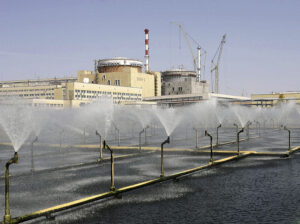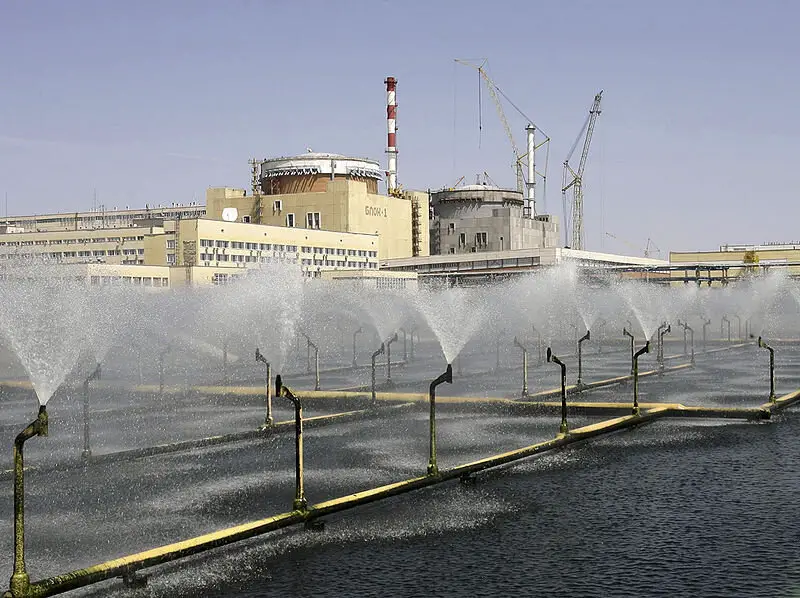5 Solutions to Thermal Pollution Explained
Solutions to thermal pollution are; pre-discharge cooling (using cooling towers, ponds), wastewater recycling, afforestation/reforestation, cogeneration, and water remediation.
This article discusses the solutions to thermal pollution, as follows;
1). Pre-Discharge Cooling (as one of the Solutions to Thermal Pollution)
Thermal pollution can occur due to the discharge of wastewater from industrial facilities like power plants and manufacturing outlets.
In fact, unsustainable wastewater discharge is one of the most prominent as well as potent, causes of thermal pollution in both urban and non-urban areas. The effects of thermal pollution by industrial discharge, are most obvious when the industrial plant is located close to aquatic ecosystems like oceans, rivers, lakes and ponds.
In addition to threatening the survival of aquatic organisms, such cases of industrially-induced thermal pollution can affect human health and economic sustainability.
An applicable solution to the problem of thermal pollution by industrial discharge is the cooling of industrial wastewater prior to its discharge. This is generally achieved using systems like cooling towers and ponds [1].
In large industrial facilities like nuclear power plants, the cooling tower is an essential component. Its role is to remove excessive heat from coolant fluid (usually water), that is being used to prevent overheating of reactor cores and turbines, among other high-temperature operational components.
The heat gained by coolant fluids as they perform their role of regulating systemic temperature, is sent to the atmosphere as waste energy through a simple, radiative energy-transfer mechanism, in the cooling tower.
Cooling ponds are reservoirs that perform essentially the same function as cooling towers.
Hot water from industrial processes like raw material-conversion and electricity generation, is collected in the cooling pond which facilitates rapid heat-dissipation into the atmosphere, with minimal thermal-environmental impact.
Pre-discharge cooling can help reduce the complexity involved in recycling industrial wastewater.
It must also be noted that for power plants, an alternative to cooling of hot wastewater is cogeneration, although it is generally difficult to achieve high efficiency with this approach.
The only (notable) potential impact of pre-discharge cooling on the environment is the release of water vapor; a greenhouse gas, into the atmosphere as a portion of the cooling water evaporates. However this impact is negligible compared to the potential scale of thermal pollution which the method prevents.

2). Wastewater Recycling
Wastewater is a common ingredient involved in thermal pollution.
This is mainly due to contaminants in such wastewater, that include industrial byproducts, chemicals, sewage, organic materials from landfills, and inorganic waste like plastics.
The presence of these materials in wastewater causes chemical and biological processes like redox reactions and biodegradation to occur, which increase the temperature of the water. On subsequent release into the environment, the wastewater acts as a potent agent of thermal pollution, usually along with acute, toxic water pollution.
A real-life instance of this is the discharge of domestic wastewater carrying untreated (or inadequately treated) sewage into the environment.
Domestic sewage causes thermal pollution through the enzymatic activities of microbes that actively break down organic biomass in sewage sludge. The chemical reactions and bioenergy transfer dynamics involved in such organic breakdown are what cause increases in temperature.
Wastewater treatment and recycling can help solve the problem of thermal pollution while achieving water conservation simultaneously. This is because such practices drastically reduce the rate at which wastewater is discharged at all, thereby effectively protecting the environment from all associated forms of pollution.
Recycling is especially helpful in cases where water resources are not surplus, as well as where the severity of degradation and heat-content of wastewater are high.
While it may involve significant expenses to treat and recycle wastewater, the long-term cost is usually much less than that which will be incurred if thermal pollution is allowed to occur; as such an event (thermal pollution) will likely create need for remediation.
3). Afforestation/Reforestation (as one of the Solutions to Thermal Pollution)
Deforestation can lead to thermal pollution by increasing the exposure of soil and water bodies to solar radiation and manmade sources of thermal energy.
This implies that measures taken to establish or restore forests can serve as potential solutions to environmental issues like thermal pollution.
Two examples of such measures are afforestation and reforestation.
Trees planted in the course of afforestation and reforestation can provide shade to both soil and water bodies in a given area, so that the rate of heat absorption by these media is reduced.
These plants also solve the thermal pollution problem through their role as carbon sinks.
The presence of vegetation in a given area optimizes the efficiency of the carbon cycle by facilitating processes that remove excessive carbon from the atmosphere.
Such processes include carbon sequestration, that leads to the storage of carbon away from the atmosphere where it would otherwise occur as carbon dioxide; a greenhouse gas and contributor to global warming (which worsens thermal pollution).
Through the photosynthetic role as primary producers in the food chain, plants also optimize the oxygen cycle by producing oxygen from carbon dioxide and water [2]. Adequate oxygen supply can help reverse the effects of thermal pollution, such as reduction in dissolved oxygen concentration.

4). Cogeneration
As earlier mentioned in this article, cogeneration can help solve the problem of thermal pollution by industrial discharge.
This is because cogeneration prevents the discharge of hot wastewater, rather using the same to supply heat for industrial processes, or to generate electricity (which can often be done with slight additional heating of such wastewater)
Cogeneration is often a sustainable solution because it also mitigates resource depletion, by reducing the rate at which energy resources are consumed to produce heat for industrial processes. At the same time, the emission of water vapor into the atmosphere (which would occur of pre-discharge cooling is implemented) will be avoided by practicing cogeneration.
The possibility, safety and sustainability of cogeneration as a solution to thermal pollution depends on factors like the initial use of water, the amount of residual heat available, and the compositional purity of the wastewater (which is determined by its initial use).
5). Water Remediation (as one of the Solutions to Thermal Pollution)
Thermal pollution affects the quality of water in a negative manner by reducing oxygen concentration, and increasing the accumulation as well as potency of toxins.
Water remediation for thermal pollution may require in situ bioremediation techniques like the use of microbes to restore natural biotic conditions, or ex situ techniques, to remove materials that are altering water temperature.
In all cases, remediation is used where preventive solutions cannot suffice, especially due to long-term, and/or severe thermal pollution.
Conclusion
Solutions to thermal pollution are;
1. Pre-Discharge Cooling
2. Wastewater Recycling
3. Afforestation/Reforestation
4. Cogeneration
5. Water Remediation
References
1). Burdenkova, E. (2021). "Heat Supply for the Power-Biological Complex from TPP and NPP." Journal of Physics Conference Series 2096(1):012150. Available at: https://doi.org/10.1088/1742-6596/2096/1/012150. (Accessed 18 May 2023).
2). Li, P.; Liu, Z.; Wang, D.; Zheng, J.; Wang, W. (2020). "Research of Plant Carbon Fixation and Oxygen Release." E3S Web of Conferences 145(5):02034. Available at: https://doi.org/10.1051/e3sconf/202014502034. (Accessed 18 May 2023).





